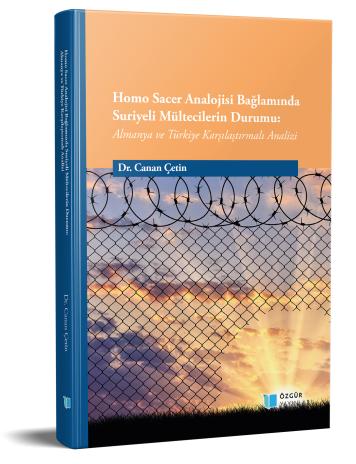
Homo Sacer Analojisi Bağlamında Suriyeli Mültecilerin Durumu: Almanya ve Türkiye Karşılaştırmalı Analizi
İndir
Özet
Göç krizinin başlangıcında tüm dünya dikkatini konuya çevirmişken, korona virüs salgını koşulları nedeniyle tüm ülkeler kendi uluslarının sağlığına, sınırlarının güvenliğine öncelik verdikleri ve mülteci meselesini yeniden rafa kaldırdıkları açıkça görülmektedir. Yaşadığımız süreci istisna-i hal kapsamında değerlendirdiğimizde mültecileri ikincil konu olarak görmek ve ulus-devlet meselelerine daha fazla önem vermek bu çalışmanın çıkış noktasını oluşturmaktadır. Giorgio Agamben'e göre, egemen güç, istisnai durumlarda ve zamanlarda yasayı askıya alma ve / veya yasanın uygulamaya konulmasını erteleme yeteneğine sahip olabilir. Agamben analojisinden yola çıkarak, Korona virüs döneminin istisnai zamanlar olarak görülebilmesi ve çoğu ülkenin önceliklerini kendi topraklarına ve insanlarına yönlendirmesi nedeniyle mülteciler de homo sacer olarak görülebilir. Bu çalışma, iki ülkeyi göç politikaları, ülkede yaşayan Suriyeli Mülteci sayıları, din, göçmen türleri gibi farklı özellikler içinde karşılaştırarak Suriyeli mültecilerin kutsal insan analojisine ilişkin koşullarını açıklamayı amaçlamaktadır. Bunun için Almanya ve Türkiye farklı parametrelerle analiz edilecektir. Ardından, ülkede toplumsal olarak ait oldukları pozisyon, çalışmanın denklemine değişken olarak eklenecektir. Ülkenin GSYİH seviyesi, nüfusu, dini, göç politikası ve mültecilerin geliş şekli bağımsız değişkenler olarak eklenecektir. Bu çalışmanın temel araştırma sorusu, "Suriyeli Mültecilerin toplumsal pozisyonları ile ülkenin yapısal özellikleri arasında bir ilişki var mıdır?" dır. Dolayısıyla bu soruyu yanıtlamak için bağımlı değişken (Suriyeli mültecilerin toplumsal aidiyet düzeyi) ve bağımsız değişkenler arasında istatistiksel olarak anlamlı sonuçlar varsa ilişkiyi ve yönünü bulmak için karşılaştırmalı analiz yöntemi ile analiz edilecektir. Bu çalışma, göç literatürüne hem nadiren kullanılan kuramsal perspektiflerden bakarak hem de veri toplama sürecinde nicel (anket) ve nitel (doküman analizi) yöntemleri aynı anda kullanarak katkıda bulunmayı hedeflemektedir.

